How to Use Triple Screen Trading System
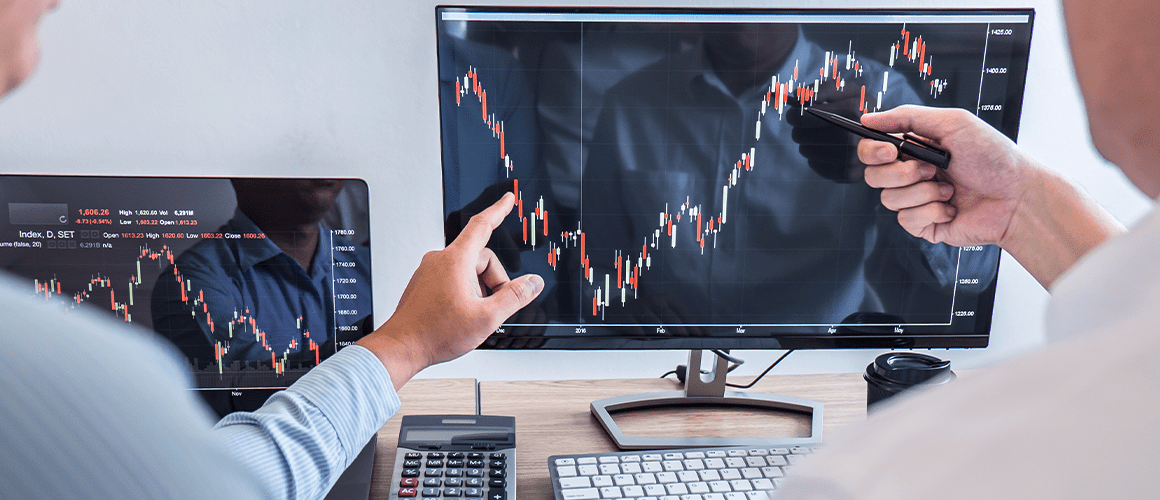
7 minutes for reading
In this review, we will discuss a trading system called Triple Screen, designed by a popular trader and author Alexander Elder. This is one of the most famous strategies suitable for all financial markets.
How does Triple Screen Trading System work?
Elder’s Triple Screen system consists of searching for and picking trades by three criteria – three screens of the strategy. Each screen is the price chart of one and the same instrument on a certain timeframe, with additional indicator signals. The screens are analyzed from the longer timeframe to the shorter.
Each screen corresponds to a trend of certain length:
- The long-term trend corresponds to the first screen; in its direction, we will look for an entry point. The timeframe is a month long or shorter depending on your trading preferences.
- The mid-term trend corresponds to the second screen; it is one step shorter than the long-term one. This is your main working timeframe where we will search for an entry signal.
- The short-term trend is reflected on the third screen; the timeframe is one step smaller than the mid-term one. Helps find a suitable entry moment.
You need to choose a timeframe you prefer – this will be your mid-term trend (second screen). The long-term trend will be one step longer, the short-term – one step shorter.
If your trades normally last for several days or weeks, a daily timeframe will suit your second screen. Then, for the first screen, you can take a weekly timeframe, and for the third screen, an hourly one will be ok. Intraday players can do likewise, using smaller timeframes. For example, if the mid-term trend is H1 or H4, the long-term will be D1, while the short-term one – M15 or M5.
In essence, the Triple Screen system is a filter for picking out trades along with the main trend after a correction, the classics of tech analysis. We find a long-term trend on the first screen, then the mid-term trend after a correction, and then find an entry point on the third screen (the shortest timeframe). Below, we will discuss analyzing each screen in more detail.

First screen
On this screen, we take the longest timeframe of all three and define the long-term trend, in which direction we will make a trade. For investors, a weekly or monthly chart will be the best choice; for traders, a smaller scale, such as W1, D1 or H4 will be better. Elder compares the long-term trend to the main stream, along with which we need to make a trade.
We define the trend by the methods of classical tech analysis and additional signals of trend indicators. Elder recommends EMA (Exponential Moving Average) with period 13 of the standard MACD (12,26,9) for defining the direction of the trend. A movement up- or downwards of the MACD histogram shows the direction of the current trend.
If the MACD histogram has reversed and is moving upwards from the area below 0, then we can speak about a long-term uptrend. If the MACD histogram has reversed and is moving downwards from the area above 0, then there is a long-term downtrend at the scene. Same with the EMA: if the EMA (13) is growing, the trend is ascending, if it is declining – then the trend is descending.
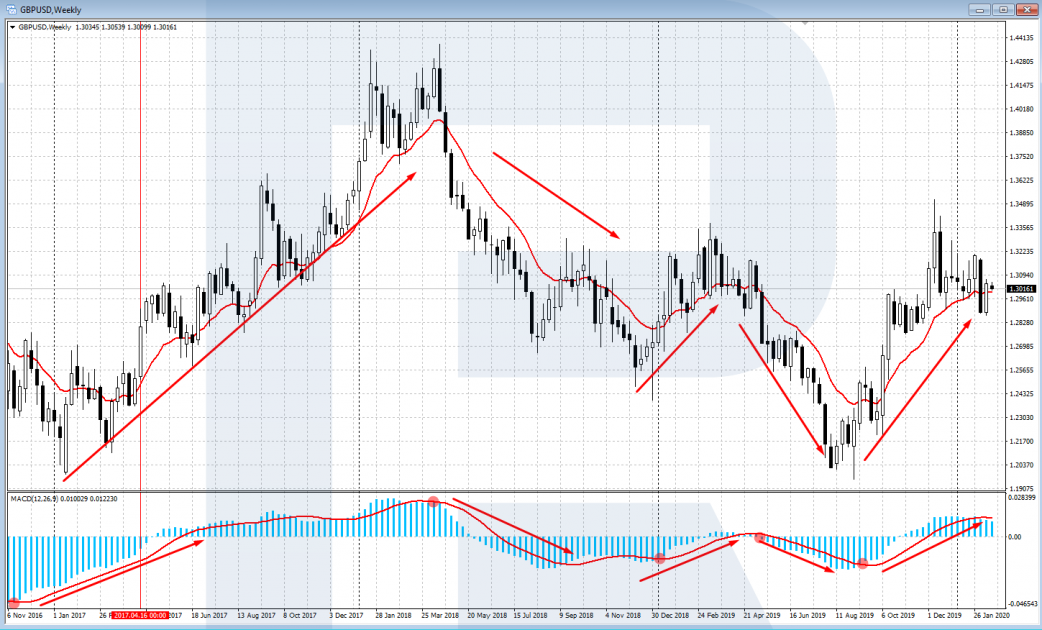
Second screen
After we have defined the direction of the trend on the first screen, we switch to the second one. On this screen, we will have a chart with a smaller timeframe, on which we will search for a trend counter the long-term one, and wait for its reversal. Elder compared the mid-term trend with a wave rolling against the main stream.
To define the point of the reversal of the mid-term trend in the direction of the long-term one, Elder recommends classic oscillators: Stochastic, RSI (Relative Strength Index), and Williams %R. When the oscillator enters the overbought/oversold area, an entry signal in the direction of the long-term trend will emerge. A divergence of the oscillator and the price chart can also be used.
As an example, let us take a popular oscillator Stochastic (5, 3, 3). IF the mid-term trend is going down, we can expect the Stochastic to give a signal to buy, when the indicator lines %K and %D will cross in the oversold area (0% to 20%). And vice versa, if the mid-term trend is moving upwards, we wait for a signal from the Stochastic to sell, when %K and %D cross in the overbought area (80% to 100%).
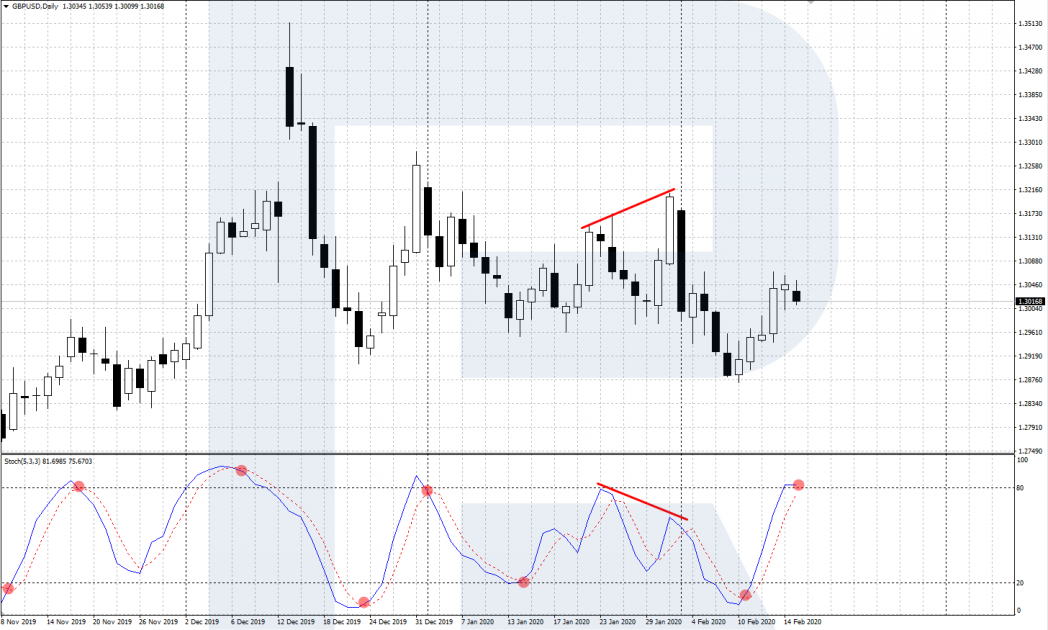
Third screen
The third screen is additional; it helps choose the moment for opening a position. Elder compares it to the swell along the main stream. According to the author, the third screen does not require a separate chart analysis or indicator signals. This is the method of entering the trade with a Trailing Stop order.
If there is an uptrend on the first screen and a downtrend on the second one, the Trailing Stop will be catching a buy at a reversal upwards. The Buy Stop order is placed one point above the high of the previous period, in which we received the signal to buy from the oscillator. If the price is still going down, the order also moves down, one point above the high, until a buy opens or the main trend reverses – then the trade is canceled. If the order was triggered, the SL is put behind the two-day low.
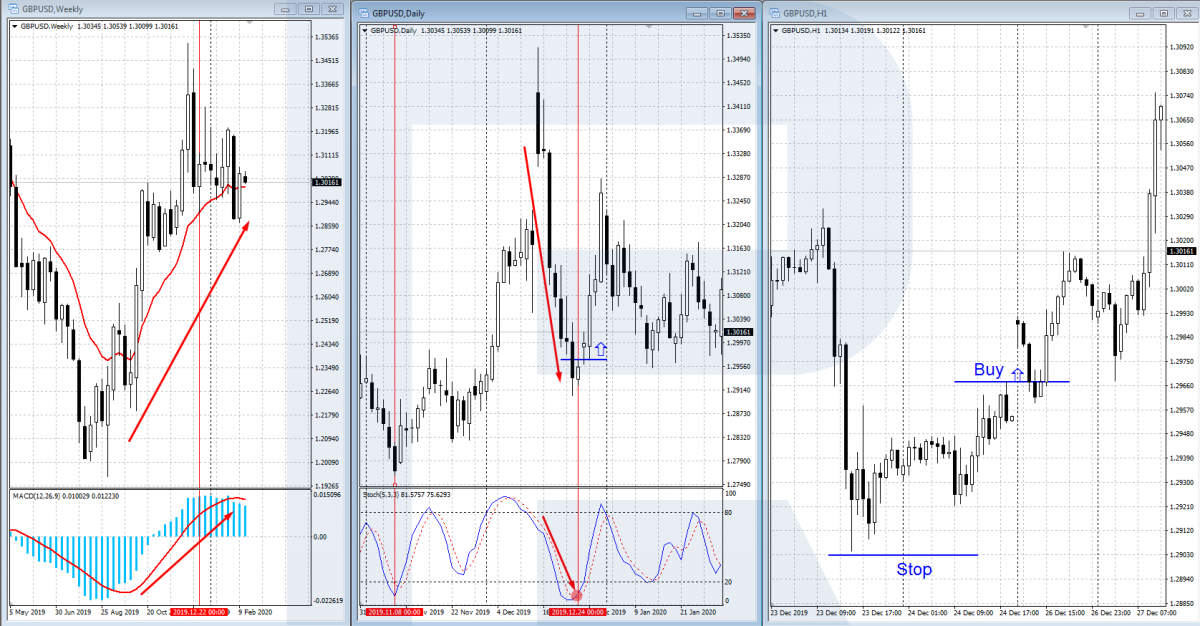
And vice versa: if the long-term trend is descending and the mid-term one is ascending, the Trailing Stop orders will be catching sales at the price movement downwards. The Sell Stop order is placed one point below the low of the previous period, in which the oscillator gave the signal to sell. If the price goes upwards then, the order is also to be moved after it one point below the low and go on like this until a sale opens or the long-term trend reverses, canceling the signal. If the trade is open, the SL is put behind the two-day high.
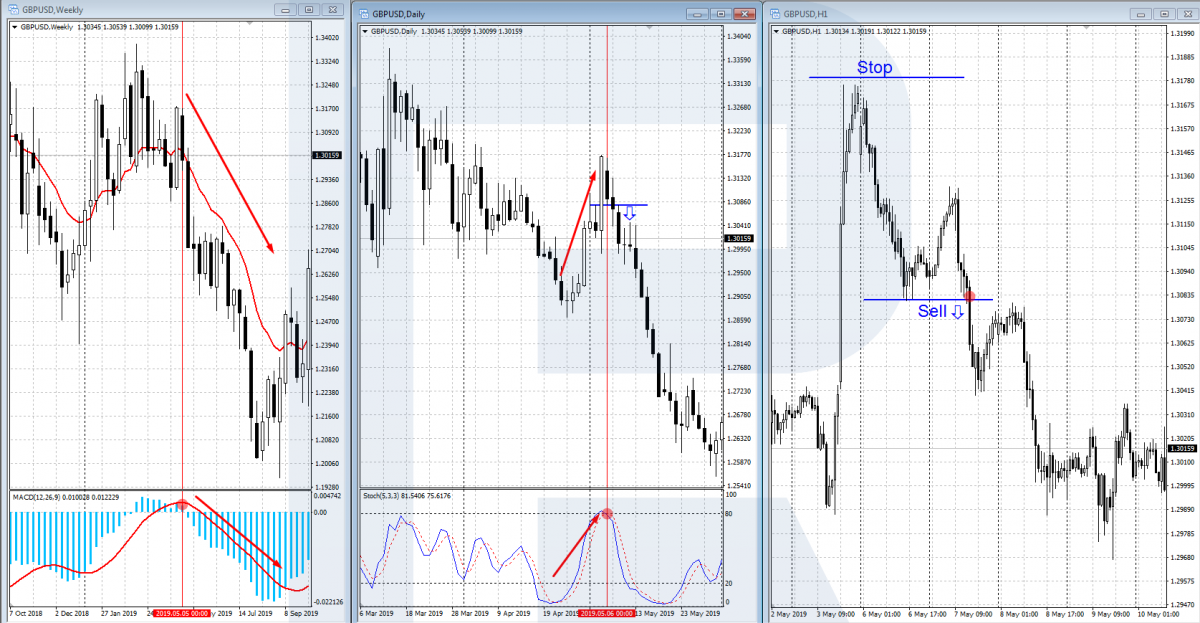
In my opinion, to make the success more probable, we should look for additional entry factors on the third screen, confirming the oscillator signal. Such factors may be: a bounce off a strong level, a false breakout of a level, tech analysis patterns, and candlestick or Price Action patterns.
Closing thoughts
Alexander Elder’s Triple Screen trading system has become widely popular because it is universal and suitable for different financial markets. This method provides an overall look at an instrument, letting the trader assess the behavior of the instrument on different timeframes and find an entry along with the main trend.
However, I would like to note that the signal from just an oscillator seems not enough; it would be wiser to add tech analysis signals: support and resistance levels, price and Price Action patterns. In his works, Elder pays a lot of attention to the psychology and money management. In more detail, his approach can be studied by the book “Trading for a Living”.











